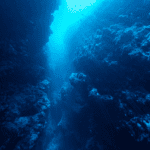 Weird Stuff
Weird Stuff  Weird Stuff
Weird Stuff  Our World
Our World 10 Ways Your Christmas Tree Is More Lit Than You Think
 Movies and TV
Movies and TV The 10 Coolest Stars to Set Sail on The Love Boat
 History
History 10 Things You Didn’t Know About the American National Anthem
 Technology
Technology Top 10 Everyday Tech Buzzwords That Hide a Darker Past
 Humans
Humans 10 Everyday Human Behaviors That Are Actually Survival Instincts
 Animals
Animals 10 Animals That Humiliated and Harmed Historical Leaders
 History
History 10 Most Influential Protests in Modern History
 Creepy
Creepy 10 More Representations of Death from Myth, Legend, and Folktale
 Technology
Technology 10 Scientific Breakthroughs of 2025 That’ll Change Everything
 Weird Stuff
Weird Stuff Ten Bizarre Facts About The Doge Meme
 Our World
Our World 10 Ways Your Christmas Tree Is More Lit Than You Think
 Movies and TV
Movies and TV The 10 Coolest Stars to Set Sail on The Love Boat
Who's Behind Listverse?

Jamie Frater
Head Editor
Jamie founded Listverse due to an insatiable desire to share fascinating, obscure, and bizarre facts. He has been a guest speaker on numerous national radio and television stations and is a five time published author.
More About Us History
History 10 Things You Didn’t Know About the American National Anthem
 Technology
Technology Top 10 Everyday Tech Buzzwords That Hide a Darker Past
 Humans
Humans 10 Everyday Human Behaviors That Are Actually Survival Instincts
 Animals
Animals 10 Animals That Humiliated and Harmed Historical Leaders
 History
History 10 Most Influential Protests in Modern History
 Creepy
Creepy 10 More Representations of Death from Myth, Legend, and Folktale
 Technology
Technology 10 Scientific Breakthroughs of 2025 That’ll Change Everything
Top 10 Incredible Scientific Facts about Earth’s Biggest Moon
To the ancient Romans, Luna was the goddess of the moon, and often in Roman art, she was shown piloting her horse or oxen-driven, heavenly white chariot in her realm across the sky. The ancient Romans adopted the Greek goddess Selena, who was also depicted driving her chariot and was symbolized by a crescent-shaped moon. Ancient Grecian rumors had it that Selena would fire an arrow full of stars across the heavens at dusk every night.
Many may not realize it, but our companion in the sky does have a real name, and it isn’t just “moon,” which you have to admit lacks imagination. Especially since “moon” is a generic term for any substantially sized object in permanent orbit around a host planet and is about as personal as “satellite.”
So, in keeping with the naming nomenclature scientists use to name newly discovered celestial objects after deities in Roman mythology, our Moon was called “Luna,” which quite appropriately is the Latin, Italian, and Spanish word for “moon.”
Luna is a mysterious orb, though, and a surprising standout superstar in our solar system. She isn’t the biggest; Ganymede has that title, but she is the biggest when compared to her host planet, which is of more importance. Besides, Ganymede looks smaller than a pea next to Jupiter, and Luna is a quarter of the size of Earth. Please read on to find out more astonishing facts about our superstar moon Luna. Oh, and don’t worry—we’ll explain the “biggest” moon thing a bit later…
Related: 10 Bizarre Ways The Moon Affects Life On Earth
10 Our Moon May Be… Hollow?
On November 20, 1969, after getting safely back to the Apollo 12 Command Module, Lunar Module pilot Allan Bean and Commander Charles Conrad Jr. set the now useless lunar lander, or LEM, on a collision course into the Moon’s surface. The intentional crashing of the LEM was part of an experiment to gather seismic data on our small planetoid, with the seismometer the crew installed on the surface.
Their aim was true since the craft crashed well within the range needed to get good readings, and the astronauts were no doubt quite pleased. That is until their joy turned to shock when they heard the Moon ring like a bell for almost an hour. The experiment strongly indicated that the Moon is a hollow structure, if anything else.
NASA performed the same exact experiment again a few missions later with the same exact results, only this time, they hit the Moon even harder. However, it didn’t just ring like a bell; it rang like a gong for over three hours, with reverberations reaching down over 20 miles (32 kilometers) deep.
This wasn’t good news for planetary scientists, though, since this evidence flies in the face of all four of their theories on how the Moon got here. But the NASA results aren’t lying. You just need to go where the evidence takes you and not take the evidence where you need it to go. Even still, we can barely guess what this might mean.[1]
9 Our Moon Is by Far the Biggest in the Solar System
The Sun has a diameter roughly 400 times that of the Moon. It also just happens to be about 400 times farther away from the Moon than the Moon is from Earth. This is the reason why we are the only planet in the solar system to experience total eclipses of both the Sun and Moon, something no other satellite is large enough or close enough to its host planet to achieve.
Our Moon is 2,160 miles (3,476 kilometers) in diameter, and if it were even a mile or so smaller or larger, a complete eclipse of the Sun or Moon would never occur. Two more incredible attributes of the Moon are its close proximity to Earth and its near-perfect orbit around it. These qualities, along with its assistance in maintaining Earth’s lifesaving magnetic field, are directly responsible for both our tides and our stable rotation.
The Moon is also not only the fifth largest by sheer size but also the biggest moon in the solar system when compared in size to their host planets. Even the planet-sized Ganymede is dwarfed when seen beside Jupiter, yet the Moon is a quarter the size of Earth. The fact that Earth is the only planet in the solar system to experience both full lunar and solar eclipses is due to the Moon being so large compared to it and it being the perfect distance away. All this helps substantiate the importance of the Moon to life on Earth.[2]
8 “Scientists Fear Lunar Lander Will Sink in Lunar Dust”
The title of this one could have been a front-page newspaper headline in the 1960s since scientists had estimated that over 4.5 million years, there must be a substantial amount of moon dust built up on the lunar surface. Maybe even enough to swallow the lunar lander whole.
Using the figure published in 1960 of 14.3 million tons (12.9 billion kilograms) per year as the meteoric dust influx rate to the Earth, some researchers have argued that the thin dust layer on the moon’s surface indicates that the Moon—and therefore, Earth and solar system—are young. Furthermore, it is also often claimed that before the moon landings, there was considerable fear that astronauts would sink into a very thick dust layer. Still, scientists have remained silent as to why the anticipated dust was not there.
In the end, on July 20, 1969, as the Apollo 11 lunar lander was approaching touchdown, its powerful engine blew up a cloud of dust. In the aftermath, only a few centimeters of dust was blown away to reveal the bedrock beneath. No, there wasn’t 60 feet (18 meters) of dust on the surface ready to swallow the craft and astronauts alive. They would be just fine.[3]
7 The Moon Is Going Away
After the Apollo missions were safely back on Earth, scientists were left with the longest-running Apollo experiment that allows them to take periodic measurements of the distance from the Earth to the Moon. They have discovered that the Moon is moving away from Earth at a rate of 1.5 inches (3.8 cm) per year. These measurements are made possible by three sets of retro-reflectors that three Apollo crews installed on the lunar surface.
Scientists at the National Radio Astronomy Observatory (NRAO) use a high-powered laser to send a beam aimed at one of these reflector installations. By timing the round trip and using a few calculations, they can determine exactly how far the Moon has receded from Earth since the last measurement was taken. This phenomenon had already been predicted by scientists, but not at this alarming rate. Scientists do have an explanation, though. According to NASA, “Milankovitch cycles” are the culprit.
Milankovitch cycles are minute changes in Earth’s orbit that alter the amount of sunlight it receives while going around the Sun. They can influence the distance between Earth and the Moon. Although Milankovitch cycles need to be studied more, scientists do know that tidal changes caused by the recession of the Moon could have an adverse impact on Earth.
For example, both the fishing and shipping industries would lose a huge advantage if the Moon went too far away. These industries, and most others on the planet, rely heavily on the Moon’s tidal influences on the oceans and seas that allow for faster transport of the goods vital for the global industry to succeed—and this is just an example of an adverse economic effect. The adverse, planet-wide effects, would be utterly devastating to all life on Earth, since a myriad of problems would crop up almost immediately, and in months, it would be unbearable for life to exist.
But you need not worry since this won’t happen for eons, unless…?[4]
6 Astronauts Couldn’t See Stars, but They Saw Fireflies
With Michael Collins orbiting overhead in the Apollo 11 Command Module and Neil Armstrong and Buzz Aldrin walking on the surface of the moon, they became the first Earthmen to visit an alien celestial body on July 20, 1969. Yet, even though during the press conference after this historical event, the astronauts looked jovial and spirited, behind the scenes, something bizarrely disturbing was tainting the unprecedented achievement. Astronauts call this bizarrely disturbing phenomenon “fireflies.”
After admitting what he witnessed in space, Michael Collins said in an interview, “I have some regrets,” after describing what he’d seen. Collins continues with a question, “The phenomenon caused a series of secret experiments, but could the explanation be out of this world?” He then said, “In 1969, the first men on the moon returned to a hero’s welcome, but during the debrief, Buzz Aldrin talks about flashes of lights in the spacecraft’s cabin.”
Collins also goes on to say that four months later, Alan Bean experienced something different and admits to seeing flashes of light while on the Moon’s surface. Bean said, “The first time I saw them, I was on the backside of the Moon, and looking down at a crater, I saw a flash.” Bean continues, “I thought, ‘Did I really see a flash?’ because there’s nothing going on down there.”
Famous NASA space shuttle pilot and former astronaut Dr. Story Musgrave said, “It’s like the Fourth of July, they streak—they’re fireworks.” This description is credited with coining the name for the lights by referring to them as “fireflies.”[5]
5 The Moon Is Shaped Like a Lemon
According to a recent paper published in the world-famous scientific journal Nature, the powerful gravitational pull of Earth pulled the Moon into the lemon shape it retains today. Some scientists theorize that the Moon could have formed from debris shot out into space after a large object collided with Earth and that the Moon formed from that debris an alleged 4.5 billion years ago.
(Please keep in mind that the theory presented here, the giant impact theory, is just one of four that scientists can choose from regarding the presence of the moon. The other three are the capture, condensation, and fission theories, all four of which share similar and/or unique problems of their own.)
According to the scientific paper in Nature, it is a “fact” that the newly minted and still pliable Moon was shaped by the Earth’s gravitation. This caused tidal bulging of the planetoid’s surface while creating many of the geological features we observe on its surface. It is further postulated that Earth’s gravitational pull thinned the moon’s crust at the poles while thickening it at its equator, causing the lemon shape it resides in today.[6]
4 Transient Lunar Phenomena
Very weird lights have been reported by Earth-based astronomers, amateur and professional alike, for centuries. Today, they’re called “transient lunar phenomena” (TLP) and are still a mystery. Observers have reported orange, red, pink, and green colored lights on the lunar surface over ten centuries. Still, just recently, in the 1960s, they started receiving more attention from the scientific community after professional astronomers decided they should look into these ancient claims of “lights on the moon.”
Since then, with more than 2,200 documented sightings in the historical record, over 300 observations of the transient lunar light phenomena occurring on the Moon to date have been officially documented by modern astronomers. For example, on June 18, 1178, five monks from Canterbury reported observing “a flaming torch” just after sunset in the northern region of Luna that was “spewing out, over a considerable distance, fire, hot coals, and sparks.” Even the famous British astronomer, Sir William Herschel, got in on the act when he observed three glowing red areas in a dark region on the Moon that he thought were caused by volcanism.
Ironically, the aurora borealis was shimmering brightly over Padua, Italy—which practically never happens. It was less than a thousand miles away from Sir William—at a time when the sunspot cycle of the sun was at its most intense level.[7]
3 NASA Was Seriously Going to Nuke The Moon
In 1958, the Russians launched the world’s first Earth-orbiting satellite called Sputnik 1. However, all the minuscule device could do was transmit a weak radio signal saying, “I’m still alive,” and that was it. That’s all it could do, yet the American public was scared out of their minds just by the thought of it since, to them, it wasn’t just an elaborate science experiment. It meant that the Soviets could end up with the capability of dropping space-based nuclear weapons down on their heads. Not a pleasant thought, indeed.
To turn the tide of the nuclear arms race back in America’s favor, the United States Air Force came up with an idea and already had a plan for how to accomplish the feat in store. It was called Project A119 and was based on an innocuously titled study called “A Study of Lunar Research Flights.” The project was led by NASA physicist Leonard Reiffel, who called for an investigation into the effects and visibility of detonating a nuclear weapon on the surface of the Moon.
From the beginning of Project A119, Reiffel highly suspected that the motives for it were political in nature. In 2000, in an interview with The Observer, he said, “It was clear the main aim of the proposed detonation was a PR [public relations] exercise and a show of one-up-man-ship [over the Soviets].
In short, the Air Force wanted a mushroom cloud to appear on the Moon’s surface, big enough for all to see from Earth, in a “see what we can do” mentality. In the end, it’s fortunate that cooler heads prevailed, or there would have never been any Apollo missions and no Moon landings.[8]
2 Lunar Dust Is Nasty Stuff
Almost the entire surface of the Moon is blanketed with what scientists refer to as “lunar regolith,” which is a dark gray, powdered substance nearly as fine as wheat flour. There is so much regolith on the Moon that the bedrock is only visible on the steeply inclined walls of craters.
Lunar regolith forms much differently on the Moon than it does elsewhere. First, regolith is more or less dirt that is found in most places like Earth, Mars, and moons, for example. It is subjected to erosion factors such as wind or water, but on the Moon, it is different. Lunar regolith forms from millions of micrometeorite strikes, leaving razor-sharp shards of material everywhere that cannot weather and stay sharp. If anything, lunar regolith just gets finer as it keeps being pounded by materials from the cosmos while retaining its sharpness.
These are the reasons why lunar regolith gave the Apollo astronauts so many problems. It was as fine as flour, sharp as glass, and had to be highly acceptable to static electricity making it stick to everything and anything, and it was dangerous. Because of its abrasiveness and spreadability, the astronauts and ground control were worried about it compromising someone’s space suit, which could be fatal. The astronauts also reported that regolith stuck to their suits, got all through the lander, and even got into their eyes, causing them to turn red and into their lungs, causing coughs.[9]
1 The Title Says, “Earth’s Biggest Moon,” But There’s Only One!
Earth’s biggest moon? What’s up with that? We all know there’s only one moon, right? Well, no. For decades, there’s been speculation in the astronomic community that there were at least two other objects in our planet’s “airspace,” if you will. Printed in the Monthly Notices of the Royal Astronomical Society, the findings tell us that the moons consist completely of fine dust particles that do not reflect light well, making them difficult to observe. That’s why it took so long to confirm their existence, even though they’re almost exactly the same distance from Earth as Luna is—about 248,548 miles (400,000 kilometers).
Our new moons were actually discovered 62 years ago by a Polish scientist named Kazimierz Kordylewski in 1961. They were subsequently named the Kordylewski Dust Clouds (KDCs), not moons, since the scientists of the day weren’t totally satisfied with their existence as solid objects. In a new study, though, the scientists used a polarized filter on their photographic equipment, allowing the camera to collect, gather, and concentrate as much light as possible into coherent images, thus proving their existence. So we really do have three satellites, not one. Now, we just need to name them. Any ideas?[10]








